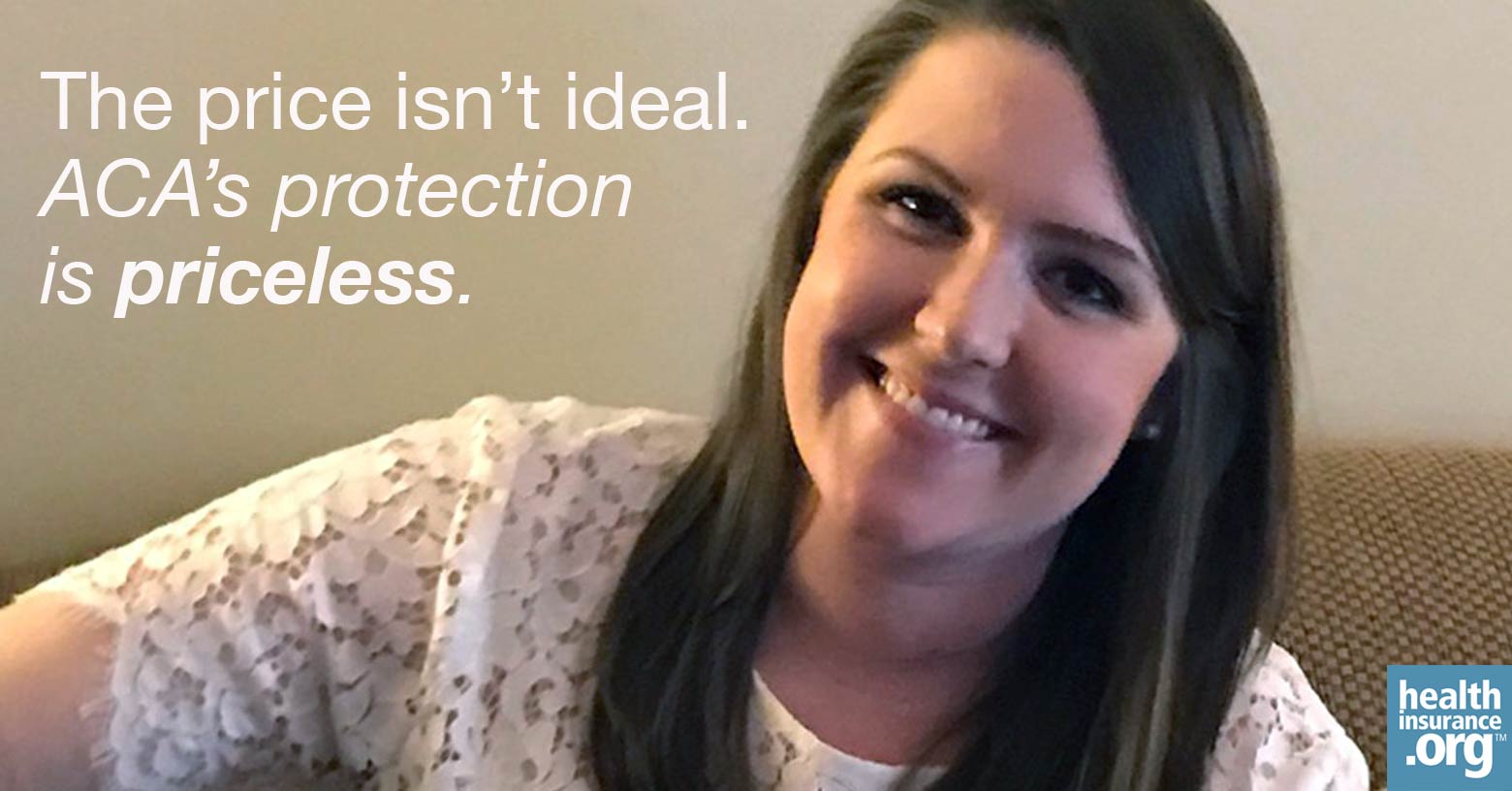
The Affordable Care Act strongly benefited the 11 million people whom the law rendered newly eligible for Medicaid, and most of the 10-plus million currently enrolled in subsidized coverage in the private plan marketplace established by the law. In surveys conducted by the Commonwealth Club and the Kaiser Family Foundation, large majorities of both groups declare themselves satisfied with their coverage – though higher-income subsidized buyers, who are generally subject to higher deductibles and copays than lower-income enrollees, are less satisfied.
Feeling the sting of unsubsidized premiums ...
The chief rap against the ACA concerns those who need to buy health insurance in the individual market but earn too much to qualify for ACA subsidies. When the ACA marketplace launched, premiums did rise sharply for millions of unsubsidized enrollees. That's chiefly because insurers could no longer screen out those with pre-existing conditions, or charge them more, or offer them insurance with treatment for their condition excluded.
This year's 20- to 25-percent price spikes hit the roughly 7 million unsubsidized enrollees in ACA-compliant plans hard. And for the unsubsidized (as well as for those at the upper income range of subsidy eligibility), out-of-pocket expenses in ACA-compliant plans are generally quite high. Among those who earn too much to qualify for Cost Sharing Reduction subsidies available to low-income buyers (which are accessed by almost 60 percent of marketplace enrollees), Silver plan deductibles average around $3,000 for a single person.
... but still in a better place, thanks to the ACA
Still, even among the unsubsidized, many individual-market enrollees are better off than they were (or would have been) in the pre-ACA market. Estimates for the percentage of applicants denied coverage because of pre-existing conditions in the pre-ACA market range from 13 percent (American Health Insurance Plans, or AHIP) to 18 percent (the Kaiser Family Foundation).
It's generally recognized that the number of people effectively shut out of the market was far higher, as many people were told by brokers, or figured out for themselves, that they didn't have a prayer of obtaining coverage. Kaiser estimates that least 27 percent of the non-elderly U.S. adult population has a pre-existing condition that likely would shut them out under pre-ACA rules.
Moreover, among those who did obtain coverage, 34 percent were charged above-market rates on the basis of their medical history in 2009, according to AHIP. Another substantial block were offered coverage that excluded treatment for their pre-existing conditions.
In all, more than half of those who sought coverage in the individual market – or would have sought coverage if they had any hope of obtaining it affordably – were either shut out of the market, or paid above-market rates.
In the pre-ACA market, the list of pre-existing conditions that could render coverage unattainable or unaffordable was long, and included now-endemic conditions like obesity and diabetes. For a family of four, the odds that someone in the family would have a condition affecting coverage were very high. Likewise for older adults: most people pick up some kind of condition or other by their fifties – particularly in a country where more than two-thirds of the population is overweight or obese.
I recently spoke to several people with pre-existing conditions (or children who have them) who have enrolled in ACA-compliant plans purchased in the individual market without benefit of subsidy. None of them regarded their coverage as perfect. All were glad to have it – and confident that they would have fared worse if the ACA had not become law.
A healthy young professional: insurable at last

Kara Holcomb
Kara Holcomb, a 29-year-old social worker living in Athens, Georgia, has had to cope with one of the primary challenges characterizing today's job market: while she has worked continuously in her profession since completing her graduate degree in 2013, she has not had access to employer-sponsored health insurance. Her first job after receiving her masters in social work was with a state agency that contracted out most of its employees – including Kara – to avoid paying for health insurance. In 2014, she moved to a small agency that does not offer health insurance to its employees.
Prior to the launch of the ACA marketplace, Kara held her breath through two periods during which she could not obtain insurance: after graduating from college in 2009, and again after obtaining her graduate degree in 2013. This strikes her as ridiculous. Of her fruitless search for insurance in 2013, she recalls:
"I'm a healthy young woman – I run half-marathons, take spin classes, and eat well. Unfortunately, I was diagnosed with arthritis in my sternoclavicular joint when I was 23 due to an old sports injury. This condition requires no treatment, aside from occasional Ibuprofen – but it allowed every single insurance provider to deny me." In her earlier period of uninsurance, a brief bout of high blood pressure and a temporary illness that led to a test for narcolepsy that came up negative knocked her out of contention.
Kara is by inclination vigilant about her health, and the periods of uninsurance caused her serious anxiety. "I am Type A – get a yearly skin check, see my OB-gyn, put a lot into making sure I'm healthy." In 2013, she recalls, "I held my breath – paid out-of-pocket for any healthcare I needed, while desperately seeking insurance. I would have paid $500 a month if I could have found a plan. I was terrified that one injury or illness could financially devastate me. I signed up for Obamacare the day the marketplace went online."
Although Kara earned too much to qualify for a subsidy, her pre-ACA experience made the marketplace offerings seem like a great deal. "I signed up for the best plan I could – Platinum, with a $1,000 deductible, for about $200 a month.
Offerings deteriorated as the years went on, though. In 2016, Humana canceled the plan Kara was enrolled in, and Kara paid about $342 a month for a Gold plan from Aetna Coventry. This year, after Aetna exited the Georgia market, her choices were limited to two insurers, and she is paying $305 per month for Blue Cross/Blue Shield Silver – with a $5,300 deductible (though Silver plans with lower deductibles were available). As it turned out, this would have been a good year to go higher on premium and lower on out-of-pocket expenses.
Kara gets a yearly dermatological checkup because melanoma runs in the family. Early this year, the checkup revealed a melanoma, and Kara underwent Mohs surgery, a sophisticated and expensive procedure whereby the surgeon can read the pathology while the surgery is in progress and thus minimize the amount of tissue removed. Kara is certain that she will have to pay her full deductible, and probably reach her yearly out-of-pocket maximum of $6,700.
Nonetheless she is grateful for the coverage. "If I didn't have health insurance, I don't know whether I would have been so quick to go in."
As for the rising premiums and out-of-pocket costs, Kara says, "I don't blame the ACA at all. I blame the insurance companies – Aetna pulling out because its merger was denied. If the ACA were supported all around, I don't think we'd be looking at this." Despite the rising costs, Kara says, "I can afford to pay more. And the ACA has allowed me the flexibility to change jobs." While Kara has incorporated the premiums into her budget, however, she will need help from her parents to pay this year's medical bills.
For a mother of small children: freedom to self-employ

Aviva Arad
Aviva Arad, a freelance editor and translator living in Montclair, New Jersey, has bought health insurance in the individual market for herself and her children both before and after the ACA marketplace launched in January 2014. Aviva's husband Zohar is a program evaluator for a small consulting firm that offers insurance that's affordable for him alone but not for the family.
Aviva first bought a plan covering herself and her son Daniel, then a year old, in 2012. She selected an expensive plan because it had the best maternity coverage available: out-of-pocket cost for hospitalization was a relatively moderate $500. When she renewed in the summer 2013 – by that point expecting her second child – the premium was $900.
When the ACA marketplace opened in the fall of 2013, selling plans effective Jan. 1, 2014, Aviva looked at the options and found that "while they were less expensive, they were less generous." The available plans also did not include coverage at the hospital where she was planning to have her baby. The best out-of-pocket deal available would have had a $1,000 deductible and 20 percent coinsurance for the hospital stay. In December, the insurer told her that her then-current coverage in the pre-ACA plan would be canceled "soon." That was alarming, and begat a long series of calls and letters before Aviva was able to confirm that "soon" meant at the plan's one-year expiration date in summer of 2014 – after her child was due.
When Aviva did switch plans in the summer, sticking with the same insurer, her premium for herself and two children dropped to about $600 per month – a third less than she had been paying for herself and one child, albeit with maternity coverage (which was extra in the pre-ACA marketplace). Out-of-pocket expenses were higher, though, and have since risen. This year she is paying $710 for a plan that carries a $2,500 single-person and $5,000 family deductible.
While different people might react differently to the premium vs. out-of-pocket tradeoff, Aviva is most concerned about the ACA's protections against insurers denying coverage or charging more for people with pre-existing conditions. While her children are healthy by any reasonable standard, her daughter Maya was born with a common, often minor heart defect, Ventricular Septal Defect (VSD) – a hole in the heart that has since closed. Her son developed asthma some time after Aviva had enrolled in her pre-ACA plan.
Aviva worries that if the ACA is repealed, those conditions could make coverage unavailable or astronomically expensive. While New Jersey was one of just five states mandating guaranteed issue before the ACA, offering that protection without mandating that all residents carry insurance made the state's insurance market one of the most expensive in the country – so much so that premiums dropped nearly 20 percent when the ACA marketplace launched. Aviva worries that the health insurance market may collapse and premiums skyrocket while Congress dithers and leaves insurers dangling. Those worries may well affect her career path.
"I'm satisfied right now with my successful freelance business," Aviva says. "I'm happy with my clients and happy with my flexible schedule, which enables us to have a good work-family balance with our young kids. But I'm really nervous about what's going to happen. I'm worried that at some point I may have to leave freelancing for a full-time job with benefits – which would rob me of my clients, hours and workplace."
For a woman immobilized by disease: freedom and productivity

Patricia Washburn
Patricia Washburn of Portland, Maine, has two life conditions that make her an ideal candidate to work from home as an independent contractor: a set of marketable skills, and a disease that severely limits her mobility. The ACA provided a third essential element: health insurance.
Pat has Lipedema, a lymphatic disease, thought to be hereditary, that causes fat to accumulate, mainly in the hips and lower body. Now 51, Pat led a normal life, she says, until she was about 40, but has become progressively disabled in recent years. She uses a walker, a wheelchair and a mobility scooter, but "I don't leave the house very often." Lipedema makes her prone to infection: "Any minor wound – or a mosquito bite – can send me to the hospital. When things go septic I have to spend three to four days in the hospital on IV antibiotic."
There is no known cure for Lipedema. Surgery can help, but Pat says it wasn't available in the U.S. until 2014, by which point her disease had advanced too far for surgery to be feasible.
Formerly a web producer for newspapers and TV news stations, Pat now works from home as a technical writer and web developer. She earns too much to qualify for a subsidy in the ACA marketplace, but the availability of insurance makes productive life possible. She pays $689 a month at present for a Gold plan with a $2,000 deductible for medical care and a $750 deductible for prescriptions. After the deductibles are reached, the plan pays 90 percent of costs with a $3,500 out-of-pocket maximum per year – and she does max out every year. "I don't love paying but it's something I can handle," she says. Her premiums spiked 21 percent this year, but "I'm happy because I still have access."
She lives near a good hospital and uses a large local health service for her primary care, so out-of-network charges have not been a problem. Recently she has been able to use tele-medicine, getting a diagnosis and prescription after a video chat – a major benefit given her limited mobility.
Prior to the ACA, Pat was uninsurable in the individual market. Insured by an employer until May 2009, she maintained insurance through COBRA before enrolling in a graduate program in computer science that enabled her to remain insured while picking up new marketable skills. Like Kara, she was enrolled in the ACA marketplace by Jan. 1, 2014, the day plans went into effect.
"Because of Obamacare," Pat says, " I am able to work from home full-time, supporting myself, paying a five-figure federal income tax bill, helping friends in need, and donating to worthy causes in my community. I am proud of being able to do all these things and my goal is to keep working as long as I can. I'm even proud that I'm able to pay for my coverage without a subsidy! Without access to affordable health care, I might well have to accept a life of public assistance and poverty."
That is a major benefit to all of us – and also a major challenge to a for-profit insurance marketplace. People in situations like Pat's are naturally most willing to pay full freight for comprehensive coverage. Insurers complain that they are disproportionately represented in the post-ACA individual market risk pool.
For a young small-town employee: access to medicine and therapy

Casey Adams
As deductibles have risen in plans offered in the ACA marketplace, so has the practice of offering a number of benefits that are not subject to the deductible. These may include a fixed or unlimited number of doctor visits (primary, specialist or mental health), prenatal and postnatal care, or generic and in some cases "preferred brand" drugs at low copays.
That works for Casey Adams, a 27-year-old director of a small-town library in Michigan. The library is a new institution, and of its six employees, Casey is the only employee who lacks access to insurance from another source. Since an employer that offers insurance to one employee must offer it to all full-time employees, the board of Casey's library opted to boost his salary to help pay for marketplace coverage rather than make a group plan available.
Casey has suffered from depression and PTSD stemming from a serious car crash. Knowing his needs, he selected a plan with a wide choice of doctors and hospitals and monthly premium of $371, with a $3,500 deductible. "That's a lot of money," he says, "but my prescription drugs and doctor visits are covered before the $3500 deductible. The drugs would be unaffordable without coverage. One drug is $443 per month without insurance, but only $15 at Rite Aid with a copay. The plan also includes dental and vision coverage, contributing to the high premium for a 27-year-old. HMO Silver plans with deductibles in the $2,000 to $2,500 range are available in Casey's area for about $250 per month at that age.
Prior to last year, Casey was covered by his mother's plan. "The under-26 provision saved me probably $15,000 until I was kicked off my mom's plan at the end of the year that I turned 26," he notes.
Coverage isn't ideal. Access to coverage is priceless.
None of these unsubsidized buyers in the individual market obtained coverage that they or anyone else would describe as ideal. Rising premiums and reduced choice of insurers exposed Kara to sharply higher out-of-pocket costs in the very year she needed expensive treatment. Aviva is faced with a high deductible and high copays that make her think twice before seeking medical care for herself or her children. Pat has to budget for almost $12,000 per year in healthcare costs. Casey has navigated successfully between a high deductible and services not subject to it – and pays a premium price, with his employer's help, for access to a robust provider network.
Nonetheless, Kara, Pat and Casey would likely be uninsurable in the pre-ACA individual market, and Aviva would likely be paying even more than she is now had the ACA never been enacted. All three may find their coverage at risk if the ACA is repealed, and if any enacted "replacement" plan does not provide adequate access to people with pre-existing conditions – or if, during a drawn-out legislative battle, insurers exit en masse from the individual market. Aviva is already planning for such contingencies.
The American Health Care Act, the ACA replacement bill that the House of Representatives is scheduled to vote on today, might actually offer lower premiums to Kara, Casey and Aviva – but not to Pat, as premiums increase more sharply with age under this plan. But out-of-pocket expenses would be even higher than under the ACA plans. And if any found themselves unable to afford coverage, over a short or long term, they might either be charged a sharp penalty for re-entering the market, or find themselves shut out permanently, as premiums do not adjust for income and Medicaid eligibility would be sharply curtailed.
Last-minute changes to the AHCA (under negotiation as this article went to press) that would repeal the ACA's Essential Health Benefits would likely render coverage unaffordable to those who need certain of those benefits, such as maternity, mental health or drug coverage.
The prospect of losing that coverage is very real.
Health insurance premiums in the individual market spiked sharply in 2017, with a lot of variation among states and regions. That was partly because two of three risk-control programs built into the ACA – designed to smooth insurers' initial losses – expired. (One of them, the risk corridor program, was all but disabled by Republican spending cuts prior to expiration.)
It was partly because insurers found themselves with older and sicker risk pools than they had anticipated. Whether the spike was a one-time correction and the market was on the point of stabilizing before Donald Trump's surprise win in the presidential election is a question that may never be resolved.
Whether Republicans will coalesce around a "repeal and replace" plan that they can pass with or without Democratic help is anyone's guess. What the individual market for health insurance will look like in 2018, let alone in five years, is also a great unknown at this point. For millions of Americans with pre-existing conditions who rely on the individual market – as for millions more who rely on ACA subsidies or Medicaid eligibility provided by the ACA – the prospect of losing coverage is very real.
Andrew Sprung is a freelance writer who blogs about politics and policy, particularly health care policy, at xpostfactoid. His articles about the rollout of the Affordable Care Act have appeared in The Atlantic and The New Republic. He is the winner of the National Institute of Health Care Management’s 2016 Digital Media Award.


